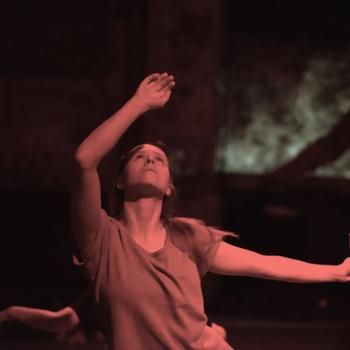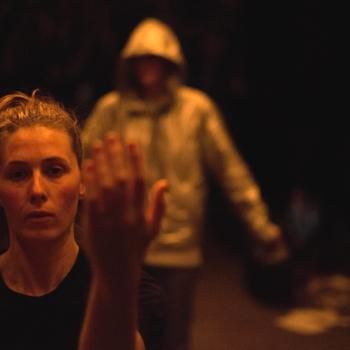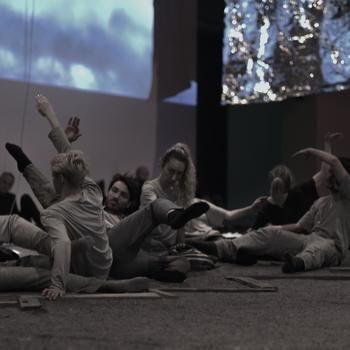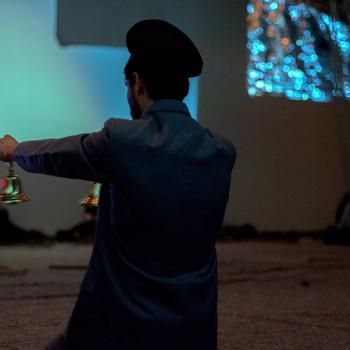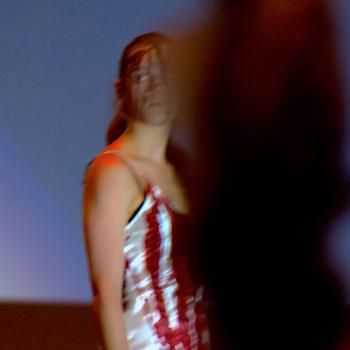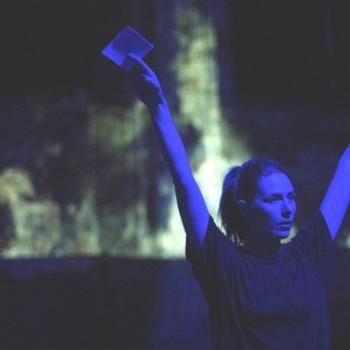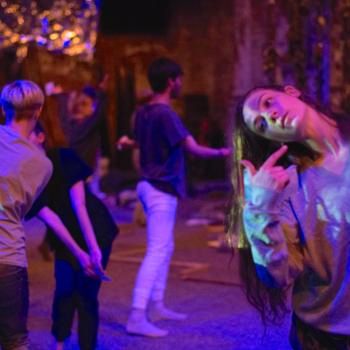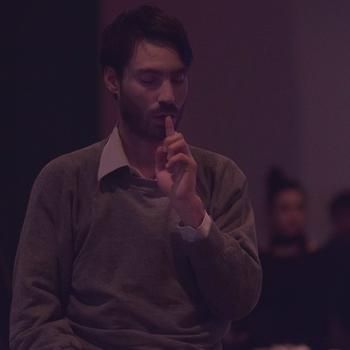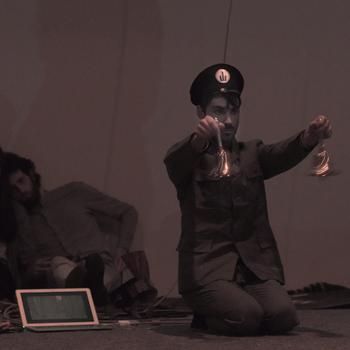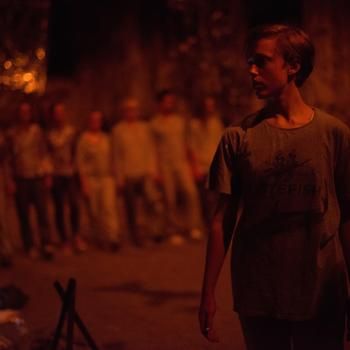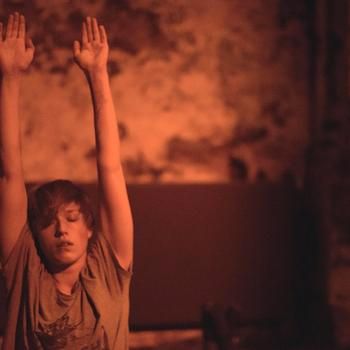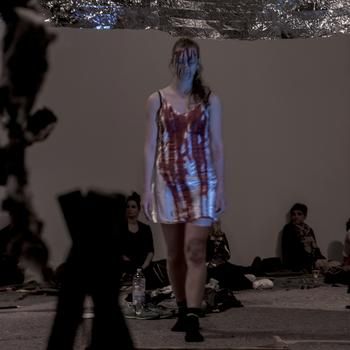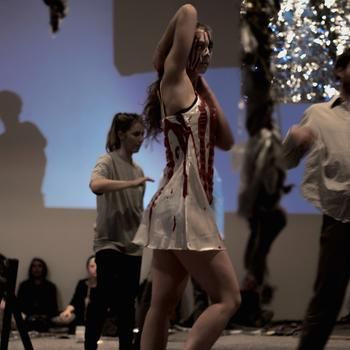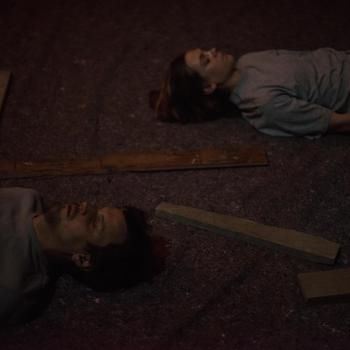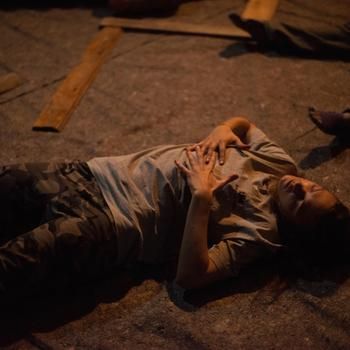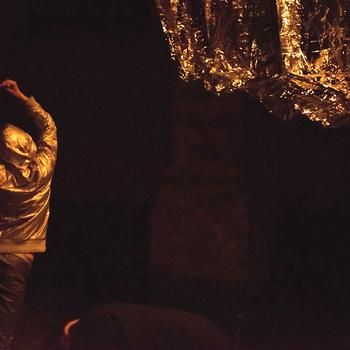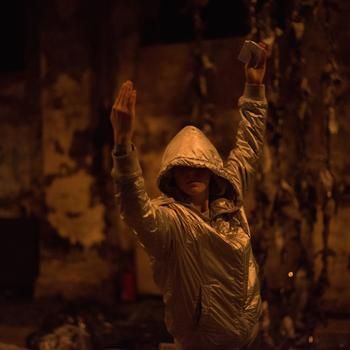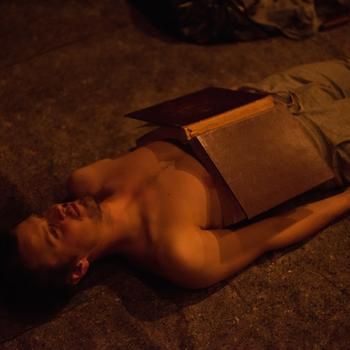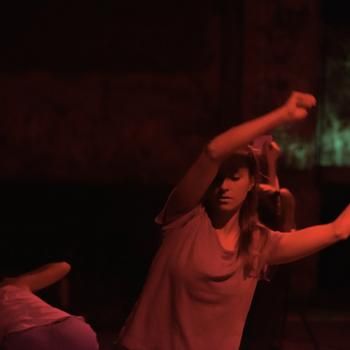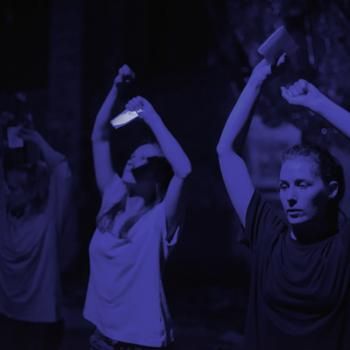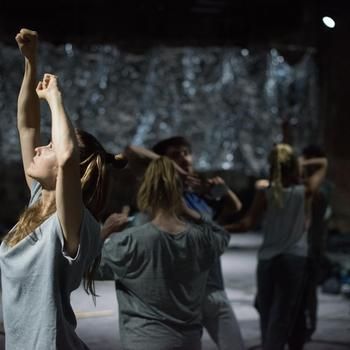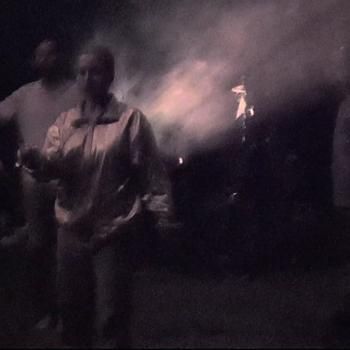Black is not enough. Natten is darker than black. The black that is the absence of black. It's not a static darkness that awaits you beyond the light. It is an illuminated lack of light that is alive and grows. A silence that emanate out of a roaring abyss.
Natten is a work by Mårten Spångberg following in the wake of "La Substance, but in English" and "The Internet". This time a crew of nine embark on a journey into the dark, bringing the audience with them into an abstract eternity where the abyss of emptiness come to life awakening the ghosts of presence, the hollowness of decay and erupts in frozen cascades of enigmatic beauty.
Natten is the horror of dance and the dance of horror. A whispering curse at the end of times, an experience so dark it must not have happened.
Sometimes it is as if the dark is extra much there. As if everything just goes black and disappear, blackout though one is still awake. Sometimes it’s like the darkness isn’t still, isn’t immobile. That’s totally nice, but shit scary, when the night bubbles a little or the abyss starts to move. You don’t want to know what it is. Not me at least. It’s captivating to think about that the creatures of the night are way more than those of the light. In numbers and all. Sometimes one would want to get to know them all, go for dinner, but then that’s just the end of their belonging to the night. It is the night that is real, the day is just reflections. That’s why one thinks of really heavy stuff then, or laugh hysterically to keep the dark away. The day is linked to life, it is at night that one exists. The night is not death - it exists and is more, much more than life. Time and light lives together. Time can be used as protection, always. It after all differentiates things. In the dark time isn’t standing still, it doesn’t cease, instead it slips away and disappears as if it never was. For in the deepest obscurity there is neither then or later, there is only now and all the time.
There is a virus that makes one experience amnesia at every moment again and again, then it’s now eternally – until one dies. There are other viruses too, one that is that the shadows no longer disappear when you turn on the light, or the sun comes out. The sun comes out, but the shadows are still there. When darkness lives its own life. In Caravaggio's paintings, it's always the black areas that shine. It is in the luminous absence of light that Artaud finds his cruelty, and it’s by boiling to a uniform black matter that "nigredo" turns towards itself, illuminated. Precisely, the dark night of the soul, when an individual confronts the shadow within.
Monsters and so are good to have in order to escape the horrifying experience that inner darkness is the same as outer and sometimes, which is the worst, when you don’t know where the one ends and so.
The night is long. There’s no blood or corpses, body parts or bones. It is long, it is when horror opens its dark eyes, and lets you experience its endless void. Overwhelmingly tranquil, a motionless sleep from which there is no escape. A reverie that entangles you in putrefaction. Six or so hours and shit dark, not like the light is off, or a bit depressed it’s more like a journey into the darkest, but no psychology. It’s pretty formal and massively dance, but often kind of slow and like it isn’t visible or materializes without structure. The day is divided the night is one. Darkness dissolve structures, everything becomes like smoke distorted and dissolved. A bit like roots firmly without soil. There are people there but one doesn’t know whom, there’s someone there but maybe just a movement. Five orange pips in an envelope. There is something there, but perhaps just a mirror-image, a body without anchoring that appears as an opacity darker than darkness itself. Not just any darkness but darkness itself. Time does not stand still it’s waiting between motion and standing, as if it were too hot, too unbearably hot for anything to happen at all. Black mirror. An abandoned blankness - that totally sounded like a cliché, but it is lovely with romantic noir. No feelings or so, an emotionless evil - cold as Robert Pattinson - even a raven - but hell no fangs or a man with a scythe - fuck that. Not the dead but that which don’t have life, but still is. Open eyes. Someone besides whispers, beyond what can be sane. And delicate music - loud noises, too - and singing. Someone has something in her mouth, costumes fall. That which is when nothing is visible, that which isn’t visible even though someone turned on the light. And everyone waits.
Plants can no longer be distinguished from animals, insects identical with rose petals that adorn a bush. And then, farther inside, plants confused with stones. Stones look like flames or brains, stalactites reminiscent of female breasts, tapestries adorned with figures. Darkness is not merely the absence of light. Pale cold skin, moist with sweat, repetition without order. Fear. While light is vacated by the objects' materiality, darkness is filled. It touches the individual directly, envelops her, penetrates him, even passes through. The ego is permeable for darkness while it is not so for light. The night expire the mimetic.
It's a new dance piece or something called Natten, though that’s just what it's called. It's known as something else, and what it’s known as isn’t its name.
Dance exists without us. Moving towards or away from us indifferent. The non-directional harbors horror and the night, nigredo, is not performative. It moves without subject, its dreadfulness is mirrored in its indifference, its absolute potentiality.
All the pieces are one, as in One, the night is also the one and indivisible – there’s no composition only textures. Intuition is darkness’s reasoning. Zone-out, as if there was no frame either, but blackness has its own creatures, illuminated by its impenetrable beauty. You know like music from Iceland or something.
Mårten Spångberg (1968) is a choreographer living and working in Brussels and Stockholm. His interest concerns dance in an expanded field, something he has approached through experimental practice in a multiplicity of formats and expressions. He has been active on stage as a performer and creator since 1994, and since 1999 has been creating his own choreographies, from solos to larger scale works, which have toured internationally. Under the label International Festival, Spångberg collaborated with architect Tor Lindstrand and engaged in social and expanded choreography. From 1996-2005 he organised and curated festivals in Sweden and internationally, and in 2006 initiated the network organisation INPEX. He has considerable experience in teaching both theory and practice. From 2008-2012, he directed the MA programme in choreography at the University of Dance in Stockholm. In 2011, his first book, Spangbergianism, was published. Mårten Spångberg is professor in dramaturgy and choreography at Oslo National Academy of The Arts, departments of dance and theatre. Mårten Spångberg is associated artist at Black Box teater Oslo, 2017-2018.
His more recent works La Substance, but in English, The Internet, Natten and Gerhard Richter, une pièce pour le théâtre has gained extensive international recognition. He has previously shown many of his works in Tallinn and is one of the artists of Tallinn Photomonth this fall.
